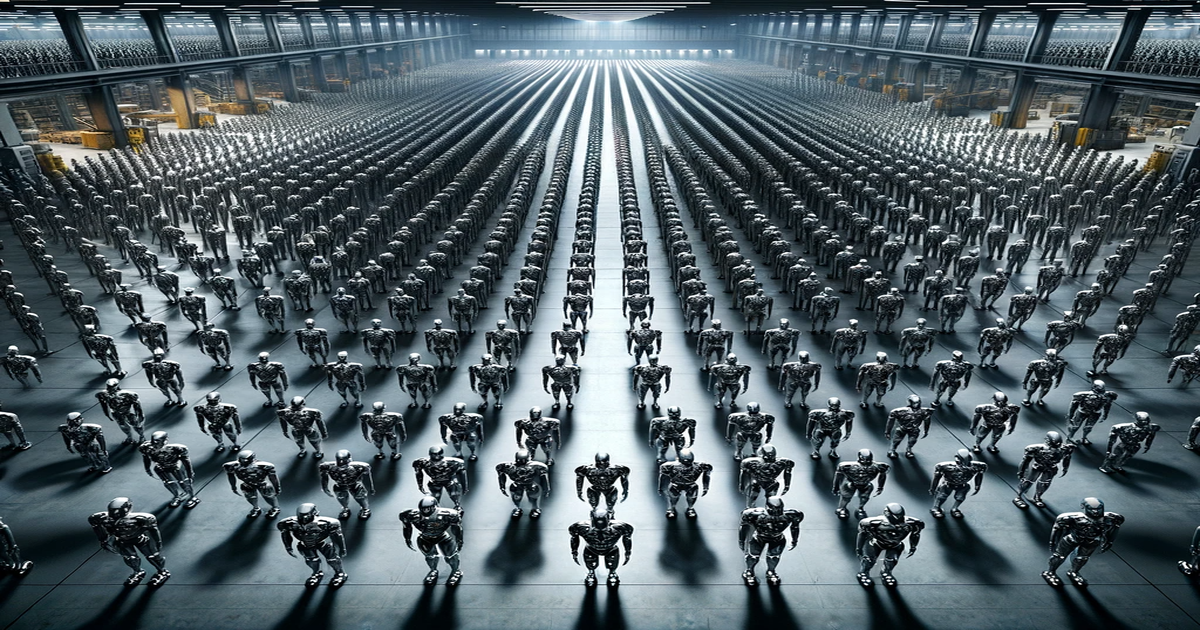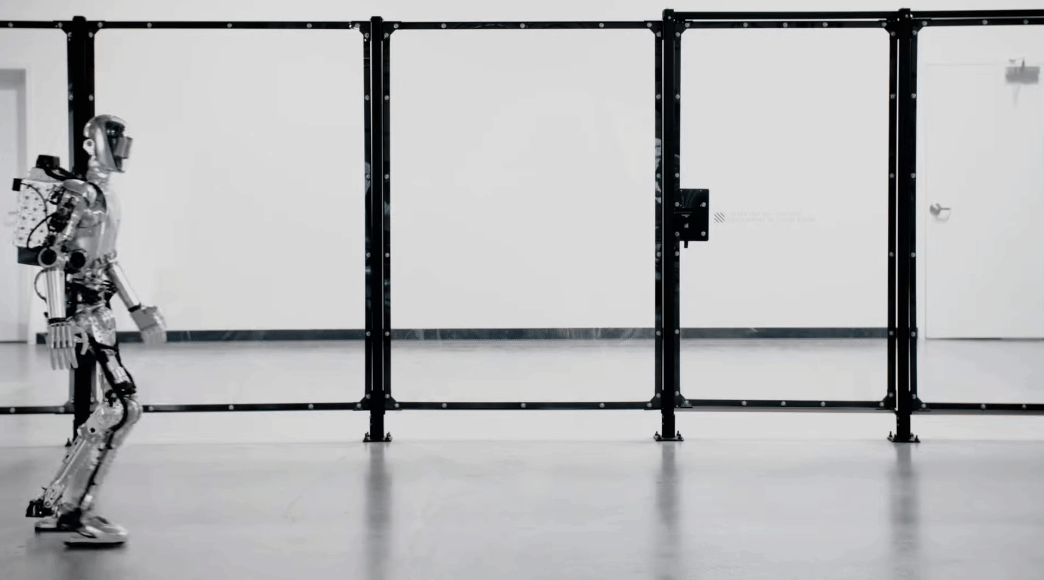
One of the reasons artificial intelligence (AI) is hard for us to grasp is that it is just software code.
While we can see the code, most of us wouldn’t understand it, and how it actually works is something that very few do understand.
But with the recent rise in large language models (LLMs) like GPT-4, accessible via OpenAI’s ChatGPT, we’re now able to chat with an AI…. and it communicates in a remarkably human way.
The result is that AI is in the early stages of quickly becoming tangible and understandable.
In other words, the technology is beginning to manifest itself into forms that we will all be able to easily interact with.
I refer to this as “manifested AI,” and it will be one of the biggest trends of 2024.
The use of AI for the purpose of optimizing complex workflow processes — or solving extremely hard problems — will proliferate next year, in 2024.
But the application of AI in robotics is will what will receive most of the attention and excitement.
On December 14, 2023, in Outer Limits, we explored what the market is completely missing with regards to Tesla.
Specifically, we looked into the latest regarding Tesla’s Optimus — a humanoid robot that has been on a remarkable development trajectory. For those who haven’t read the issue, I encourage you do so right here.
What’s exciting about Optimus is that it is being designed as the most advanced form of manifested AI — a general purpose fully autonomous humanoid robot. The quest for such a robot has been the realm of science fiction for almost a hundred years.
But we won’t be reading about it much longer. We’ll be experiencing it in real life.
And, as I alluded to in my previous issue, Tesla isn’t the only company competing in this space.
One of the companies that we’d be smart to track closely in 2024 is Figure. It is one of the very few companies that has the potential to be a competitive threat to Tesla’s Optimus.

Above is Figure 01, Figure’s first humanoid robot. We can think of Figure 01 as a pre-commercial prototype of Figure’s general purpose humanoid robot.
Notable is that Figure’s approach to building Figure 01 is similar to Tesla’s. For example, rather than use off-the-shelf hardware, Figure designed its own actuators that are about half the size of what’s available (note: actuators are what generate the force to move the limbs or digits of a robot).
Figure also embraced neural networks, a form of AI, in the development of the software that is manifested in Figure 01. This is the same technology that Tesla uses for Optimus, as well as for its autonomous driving technology available on all of its cars/trucks.
Neural networks are unique in that they can be fed training data and learn in a way similar to how we learn. Obviously, the more training data, the faster a neural network will improve.
Robotics that use neural networks are also capable of collecting their own data from the real world. The technology has the ability to iterate and optimize specific tasks… and improve without any human intervention.
This is a powerful concept because as long as a robotic system has power, it can “learn” and improve 24 hours a day. Just imagine how productive we humans could be if we didn’t need to eat, sleep, and rest!
As we saw with Tesla, and as we now see with Figure, this technology is real, and on an accelerated development trajectory. Tesla has a target to begin manufacturing by the end of 2024, and Figure’s CEO has alluded to ramping up its own manufacturing process next year as well.
Figure has gone from its first capital raise of $100 million in January of 2022 — when all it had was an idea on paper — to a functioning prototype in less than two years.
The company is moving at a similar pace as Tesla.
In other words, the race is on.
But why the rush? Aren’t we getting by just fine in the absence of walking and talking humanoid robots?
Yes, most of us are doing fine, but that’s only because we don’t see the big picture of how badly this technology is needed.
Consider this:
These realities answer the question as to the immediate necessity of such technology, as well as the concern that these newfound robots will take all of our jobs.
The answer is that they won’t take all of our jobs, but they will be tasked with taking over the jobs that are less desirable for humans.
And the truth is that the manufacturing sector is just the tip of the iceberg.
Let’s take the healthcare industry, for example. There is a widespread shortage of nurses and healthcare aides across the world. These are tasks that can be augmented with autonomous humanoid robots, as most of the tasks related to caring for patients are routine.
And just imagine how this could improve quality of life for many patients. Rather than staying in a hospital, a patient could sleep in their own bed at home with the support of a humanoid robot that could report in real time the status of its human patient back to a physician.
The benefit of this model is increased quality of care and reduced burden on the healthcare system.
It isn’t hard to imagine that support like this could be covered by insurance. After all, the average cost of a day in the hospital in the U.S. is $2,883.
Tesla has suggested that Optimus will cost around $25,000. That’s equivalent to 8.5 days in a hospital…
I can all but guarantee that companies will spring up whose business model is leasing Figure 01s or Optimus robots for healthcare applications.
Or, if we really want to go to the outer limits, how about a workforce designed to work on the Moon, Mars, or on asteroids for the purpose of constructing human habitats… or mining for construction materials and rare minerals?
How big is the prize?
My rough estimation is that there is at least a market demand for 1 billion humanoid robots. At $25,000 each, that is a $25 trillion market. That’s not a typo.
The company, or companies, that solve this market need will be worth trillions.
What do you think of this issue of Outer Limits? As always, we welcome your feedback and questions, and look forward to them. We read each and every email and address common questions in the Friday AMA issues. Please write to us by clicking here.